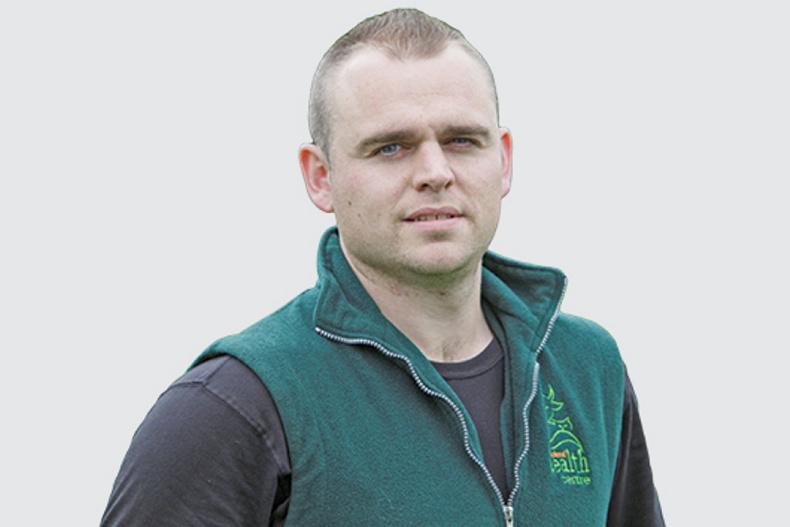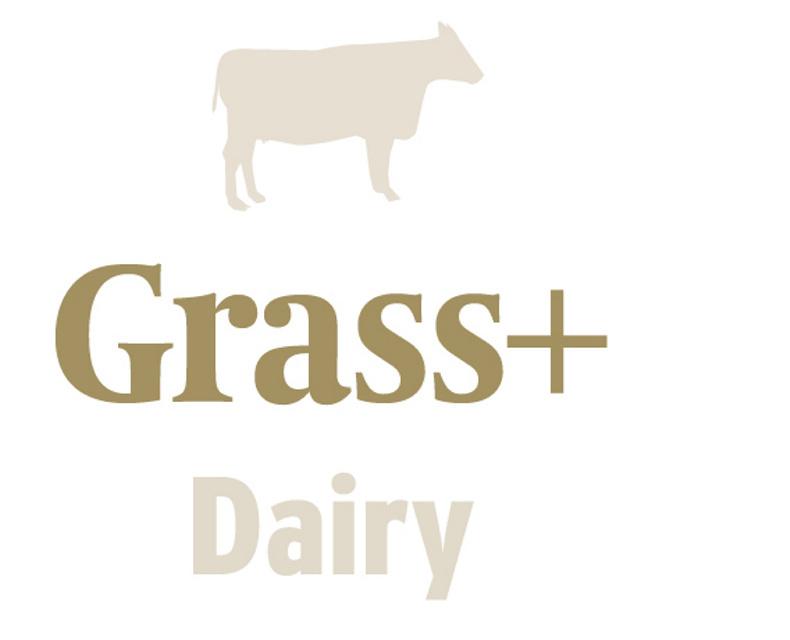Average grass growth has increased this week to 25kg/ha/day but grazing conditions became very sloppy mid-week with widespread heavy rain and snow. The snow meant that many herds had to be re-housed. The good news is that there is much better weather forecast for the weekend and beyond.
In terms of managing grazing, it is very much back to basics. It will take a while for all soil types to dry out after a heavy snowfall as snow, depending on how long it lasts, saturates the ground. Assess ground conditions morning and evening and make a decision about grazing based on what you see. On/off grazing, back fencing and grazing in square blocks will be necessary. If managing very large herds, consider splitting them up into smaller groups where they will do less damage at gaps.
Average farm covers on our Grass+ farms are 950kg/ha. Growth rates have now increased and where herds had to be re-housed demand has decreased. This means that average farm covers are not dropping fast enough and a big glut of grass at the end of the first round is now inevitable. This is dangerous territory as it means grass could be scarce for the second round.
Where possible, do not sacrifice clean out now by thinking that you will have the grass for the second round. This will seriously reduce grass quality and make it next to impossible to achieve correct residuals in subsequent rounds without resorting to a mower.
As we approach the end of March, most herds would normally be looking at starting the second round in the next 10 days. Where a high proportion of the farm has been grazed, (greater than 70%) then these targets do not change.
But where less of the farm has been grazed, then the start of the second round will be delayed until there is sufficient re-growth on the first grazed paddocks.
Average growth rates are up to 25kg/day.Ground conditions are very difficult after heavy rain and snow in parts.High average farm covers will make it difficult to finish the first round of grazing.![]()

Teagasc Curtins Farm
Stocking rate (cows/ha) 2.9
Growth rate (kg/day) 44
Average farm cover (kg/ha) 1,052
Yield (l/cow/day) 22.5
Fat % 5.13
Protein % 3.45
Milk solids (kg/cow) 1.99
Supplement fed (kg/cow/day) 1
Ground conditions had been fairly good up to today (Wednesday) but we are now covered in snow. We have no choice but to keep the cows in until the snow melts but ground is now very wet too. We have 71% of the farm grazed and 90% of the cows calved. The plan is to start the second round on 5 or 6 April. Average farm cover is still very high at 1,052 and there is a cover of 900kg on the first grazed paddock. Average body condition score is just below 3 which is good. We are feeding 1kg of meal per cow per day.

Teagasc Clonakilty
Stocking rate (cows/ha) 2.76
Growth rate (kg/day) 30
Average farm cover (kg/ha) 841
Yield (l/cow/day) 27.4
Fat % 4.73
Protein % 3.28
Milk solids (kg/cow) 2.28
Supplement fed (kg/cow/day) 2
We had some snow on Wednesday but it didn’t lodge so we still managed to get cows out for three hours and then back into the shed. If the weather comes right the farm will be ready to take off so I’m going to cut out concentrate fully in anticipation of higher growth rates.
We have 72% of the farm grazed and the plan is to start the second round in early April as normal. Clover content is currently 9.6%, which is nearly double the level of the past few years due to the mild winter.

Moydow, Longford
Stocking rate (cows/ha) 3.8
Growth rate (kg/day) 17
Average farm cover (kg/ha) 1,102
Yield (l/cow/day) 20.5
Fat % 5.7
Protein % 3.4
Milk solids (kg/cow) 1.92
Supplement fed (kg/cow/day) 3
We’ve had a poor enough spring around here with a lot of rain nearly the whole way through. The result is that we’ve only 53% of the farm grazed when normally we’d have 80% or more grazed by now. We did delay calving by a week this year which probably helped considering the weather we’ve had. Cows have been out fulltime for the past few days but we are watching it closely and have done a lot of on/off grazing. If cows are in on silage we increase the meal feeding to 5 or 6kg. We have a high cover but we also have a high stocking rate so I’m confident it’ll all be eaten.

Killimor, Co Galway
Stocking Rate (cows/ha) 3.5
Growth Rate (kg/day) 28
Average Farm Cover (kg/ha) 822
Yield (l/cow/day) 21
Fat % 4.11
Protein % 3.28
Milk Solids (kg/cow) 1.6
Supplement fed (kg/cow/day) 3m3s
Grazing is like a game of cat and mouse at the moment and we are taking the chances when they come. Cows are getting grass every milking but sometimes just for a few hours or we stand them off for a few hours before grazing if it is raining. We have started to feed some round bale silage to stretch the round as we are catching up on area grazed fast. Protein dropped when we started feeding the silage. There is some damage being done but it is small enough in the bigger picture. We have 75% of the cows calved.
Read more
Grass+ beef: hoping for a big grazing weekend
Average grass growth has increased this week to 25kg/ha/day but grazing conditions became very sloppy mid-week with widespread heavy rain and snow. The snow meant that many herds had to be re-housed. The good news is that there is much better weather forecast for the weekend and beyond.
In terms of managing grazing, it is very much back to basics. It will take a while for all soil types to dry out after a heavy snowfall as snow, depending on how long it lasts, saturates the ground. Assess ground conditions morning and evening and make a decision about grazing based on what you see. On/off grazing, back fencing and grazing in square blocks will be necessary. If managing very large herds, consider splitting them up into smaller groups where they will do less damage at gaps.
Average farm covers on our Grass+ farms are 950kg/ha. Growth rates have now increased and where herds had to be re-housed demand has decreased. This means that average farm covers are not dropping fast enough and a big glut of grass at the end of the first round is now inevitable. This is dangerous territory as it means grass could be scarce for the second round.
Where possible, do not sacrifice clean out now by thinking that you will have the grass for the second round. This will seriously reduce grass quality and make it next to impossible to achieve correct residuals in subsequent rounds without resorting to a mower.
As we approach the end of March, most herds would normally be looking at starting the second round in the next 10 days. Where a high proportion of the farm has been grazed, (greater than 70%) then these targets do not change.
But where less of the farm has been grazed, then the start of the second round will be delayed until there is sufficient re-growth on the first grazed paddocks.
Average growth rates are up to 25kg/day.Ground conditions are very difficult after heavy rain and snow in parts.High average farm covers will make it difficult to finish the first round of grazing.![]()

Teagasc Curtins Farm
Stocking rate (cows/ha) 2.9
Growth rate (kg/day) 44
Average farm cover (kg/ha) 1,052
Yield (l/cow/day) 22.5
Fat % 5.13
Protein % 3.45
Milk solids (kg/cow) 1.99
Supplement fed (kg/cow/day) 1
Ground conditions had been fairly good up to today (Wednesday) but we are now covered in snow. We have no choice but to keep the cows in until the snow melts but ground is now very wet too. We have 71% of the farm grazed and 90% of the cows calved. The plan is to start the second round on 5 or 6 April. Average farm cover is still very high at 1,052 and there is a cover of 900kg on the first grazed paddock. Average body condition score is just below 3 which is good. We are feeding 1kg of meal per cow per day.

Teagasc Clonakilty
Stocking rate (cows/ha) 2.76
Growth rate (kg/day) 30
Average farm cover (kg/ha) 841
Yield (l/cow/day) 27.4
Fat % 4.73
Protein % 3.28
Milk solids (kg/cow) 2.28
Supplement fed (kg/cow/day) 2
We had some snow on Wednesday but it didn’t lodge so we still managed to get cows out for three hours and then back into the shed. If the weather comes right the farm will be ready to take off so I’m going to cut out concentrate fully in anticipation of higher growth rates.
We have 72% of the farm grazed and the plan is to start the second round in early April as normal. Clover content is currently 9.6%, which is nearly double the level of the past few years due to the mild winter.

Moydow, Longford
Stocking rate (cows/ha) 3.8
Growth rate (kg/day) 17
Average farm cover (kg/ha) 1,102
Yield (l/cow/day) 20.5
Fat % 5.7
Protein % 3.4
Milk solids (kg/cow) 1.92
Supplement fed (kg/cow/day) 3
We’ve had a poor enough spring around here with a lot of rain nearly the whole way through. The result is that we’ve only 53% of the farm grazed when normally we’d have 80% or more grazed by now. We did delay calving by a week this year which probably helped considering the weather we’ve had. Cows have been out fulltime for the past few days but we are watching it closely and have done a lot of on/off grazing. If cows are in on silage we increase the meal feeding to 5 or 6kg. We have a high cover but we also have a high stocking rate so I’m confident it’ll all be eaten.

Killimor, Co Galway
Stocking Rate (cows/ha) 3.5
Growth Rate (kg/day) 28
Average Farm Cover (kg/ha) 822
Yield (l/cow/day) 21
Fat % 4.11
Protein % 3.28
Milk Solids (kg/cow) 1.6
Supplement fed (kg/cow/day) 3m3s
Grazing is like a game of cat and mouse at the moment and we are taking the chances when they come. Cows are getting grass every milking but sometimes just for a few hours or we stand them off for a few hours before grazing if it is raining. We have started to feed some round bale silage to stretch the round as we are catching up on area grazed fast. Protein dropped when we started feeding the silage. There is some damage being done but it is small enough in the bigger picture. We have 75% of the cows calved.
Read more
Grass+ beef: hoping for a big grazing weekend










 This is a subscriber-only article
This is a subscriber-only article















SHARING OPTIONS: